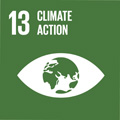- Docente: Stefania Bortolotti
- Credits: 10
- Language: Italian
- Teaching Mode: Traditional lectures
- Campus: Bologna
- Corso: First cycle degree programme (L) in Political, Social and International Sciences (cod. 8853)
-
from Feb 19, 2024 to May 24, 2024
Learning outcomes
By the end of the course the students will: - master the basic tools for the study of the behaviour of the main economic agents (consumers, firms, government) and of their interactions in the markets. - know the basic theoretical instruments for the understanding of the redistributive effects of public policies, with particular reference to the Italian case.
Course contents
Overview of the course
INTRODUCTION (chapter 1)
- The Capitalist revolution and wealth inequality
- Technological change, population and economic growth
PART I: Scarcity, work, and choice (chapters 2 and 3)
- Labour, preferences, opportunity costs
- Economic growth and labour time (theory, historic evolution and cross-country differences)
- Wealth and substitution effect
PART II: Social interactions (chapter 4)
- Game theory
- Social preferences (prisoner's dilemma, public goods etc)
- Lab and field experiments
PART III: Demand and supply, monopoly, and perfect competition (chapters 7 and 8)
- Competitive markets and equilibrium
- Market power and monopoly
PART IV:Externalities and out-of-equilibrium rents (chapters 11 and 12)
- Out-of-equilibrium
- Negative externalities, property rights, bargaining, and piguvian taxes
Please make sure to check the updated program and the detailed syllabus online, on the Virtuale page of the course.
Readings/Bibliography
The CORE Team (2018), Economia: Comprendere il mondo che cambia, il Mulino.
Ebook version available here free of charges: https://www.core-econ.org/project/leconomia/
The book is also available in English. The e-book offers a number of interactive tools, including self-assessment tests.
Teaching methods
Lectures and exercises, complemented by supporting material. Interactive tools, market simulations, and newspapers articles will be used during the lectures to foster the understanding of the phenomena under study.
Attendance of both lectures and exercises is strongly recommended.
Assessment methods
Written exam structured around three parts: multiple choice questions, theoretical questions, and exercises.
During the semester, students will be able to take two partial exams (the final grade is the average of the two partials).
No additional partial exams will be scheduled during the academic year.
The grade is graduated as follows:
<18 failed
18-23 sufficient
24-27 good
28-30 very good
30 e lode excellent
Teaching tools
The course comprises a total of 60h of frontal lectures and 20h of exercises.
Slides, the material for the exercises, and other material will be made available online on IOL and on the personal webpage of the instructor: https://sites.google.com/site/stefaniabortolotti/teaching
Both the book and the additional material are compulsory for the preparation of the exam.
Office hour (only by appointment): Thursday from 9.30 am to 11.00 am. Please write an email to the instructor at least 24h before.
Office hours
See the website of Stefania Bortolotti
SDGs




This teaching activity contributes to the achievement of the Sustainable Development Goals of the UN 2030 Agenda.
